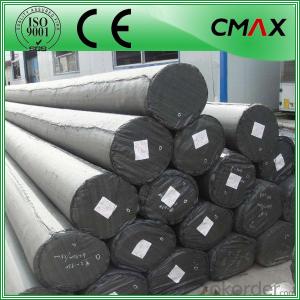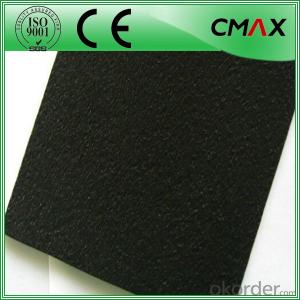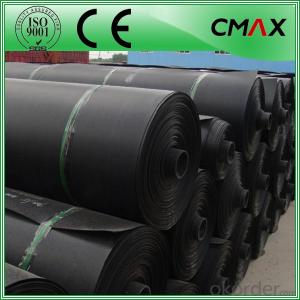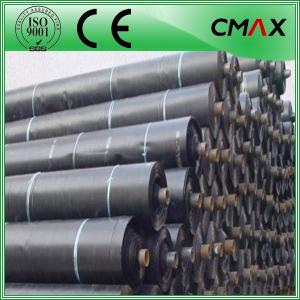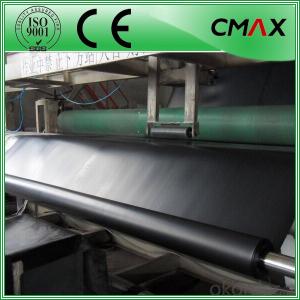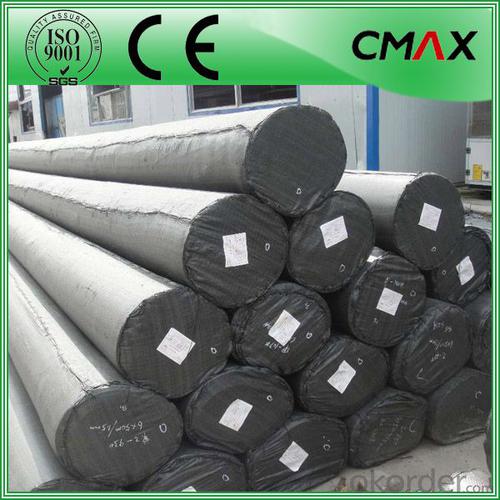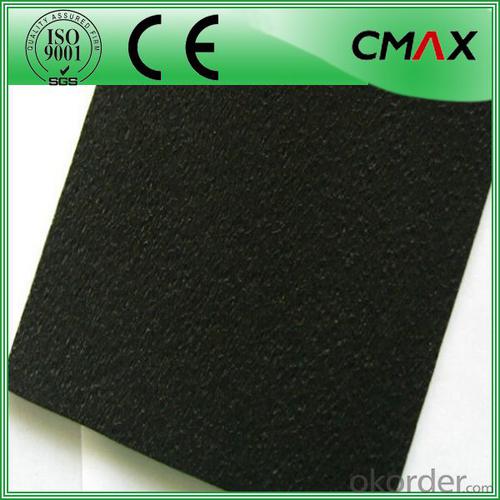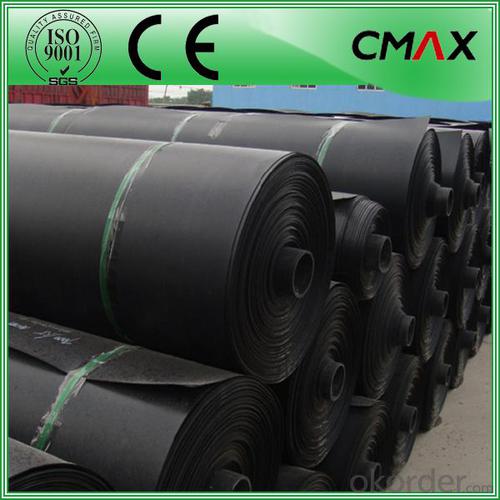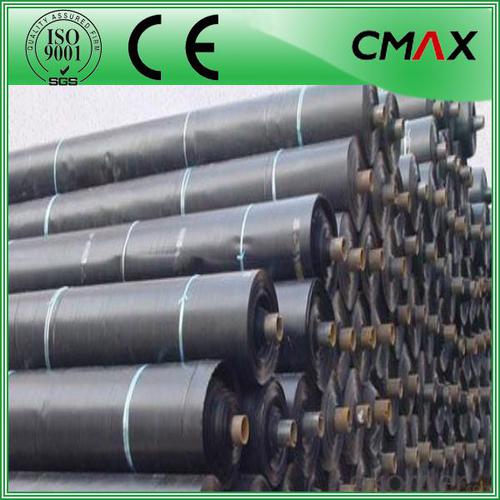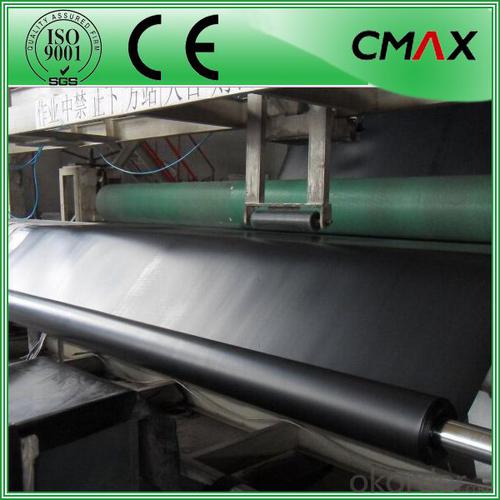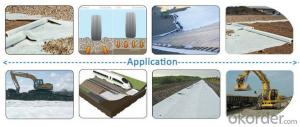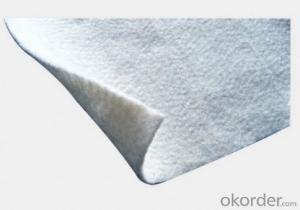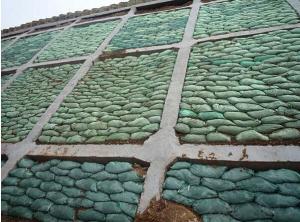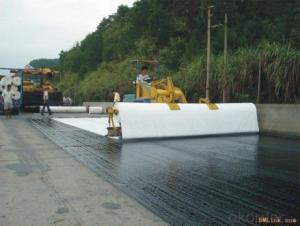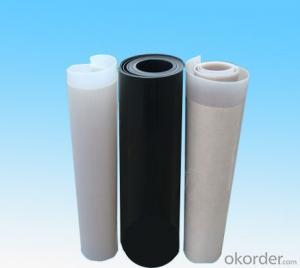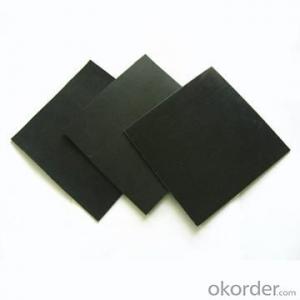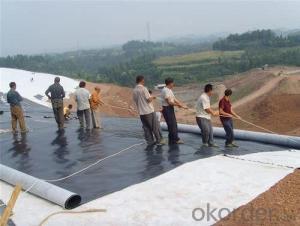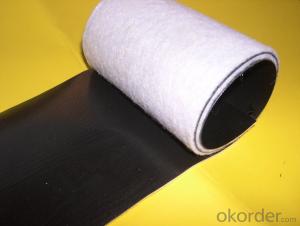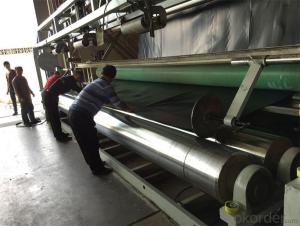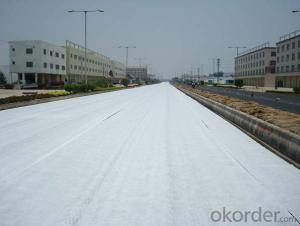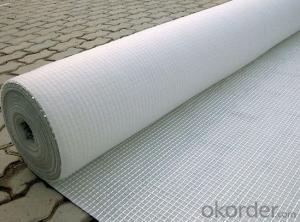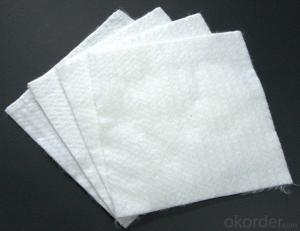Geomembrane HDPE Pond Lining 0.2,0.3,0.5,0.6mm for Water,Pond,Landfill Construction
- Loading Port:
- Tianjin
- Payment Terms:
- TT OR LC
- Min Order Qty:
- 100 roll
- Supply Capability:
- 20000 roll/month
OKorder Service Pledge
OKorder Financial Service
You Might Also Like
Geomembrane HDPE Pond Lining 0.2,0.3,0.5,0.6mm for Water,Pond,Landfill Construction
Geomembrane Features:
Good mechanical properties, high tear strength, deformation and adaptable, puncture resistance, anti-aging, anti-ultraviolet-resistant, Anti oil and salt, pH, anti-corrosion, high temperature-resistant, non-toxic, long service life. water, drainage, seepage, the good effect of moisture, width, thickness of the full range of specifications and low cost, simple construction.
Specifications and Technical datas:
| Thickness | 0.15mm - 4.0mm |
| width | Within 8 m |
| length | 50-100m/roll (at request) |
| Material | HDPE,( LDPE, LLDPE, PVC, EVA ) |
| Color | Black , white , grey |
| Optional surface | Textued(one or two side) or smooth surface |
| Manufacturer | The biggest geomembrane liner manufacturer/factory in China for many years |

Details of our products:
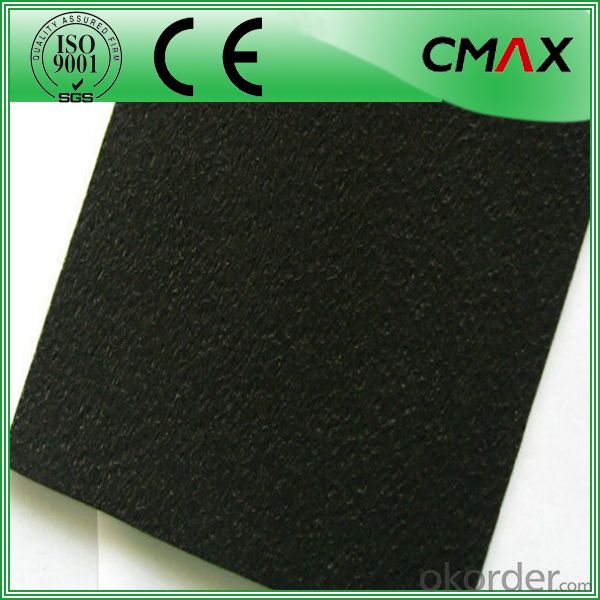
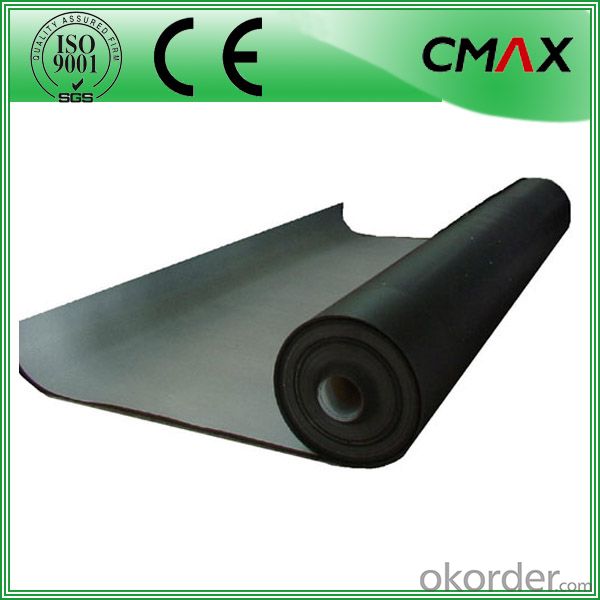
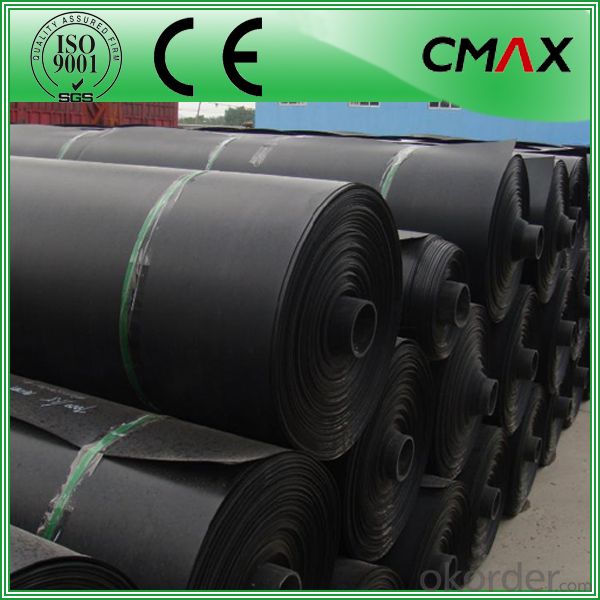
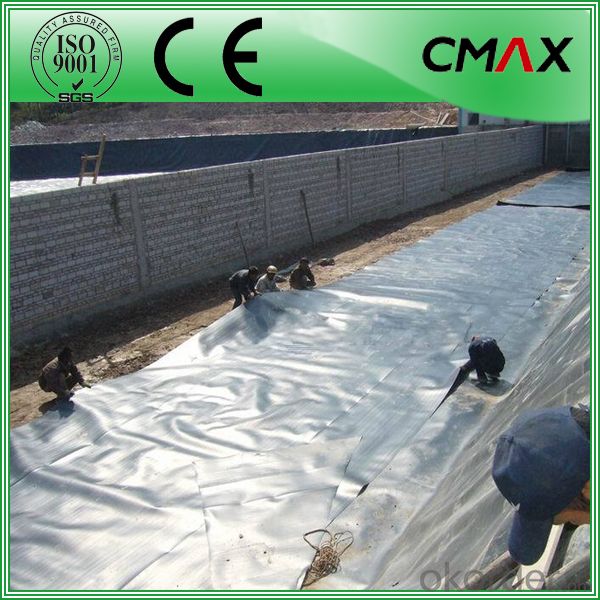
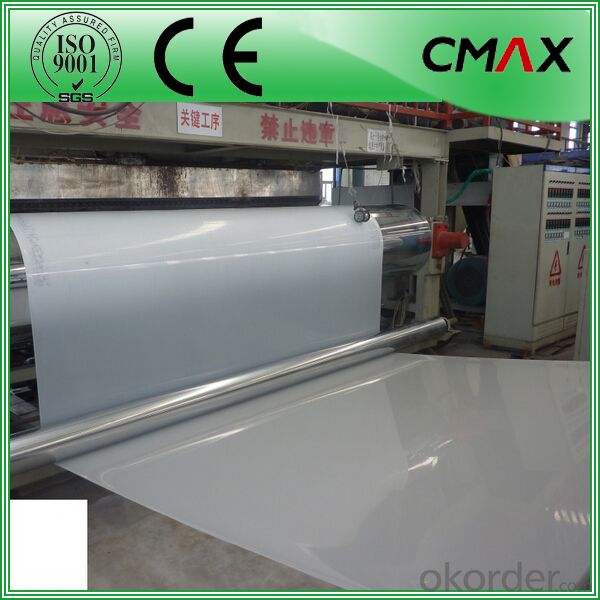
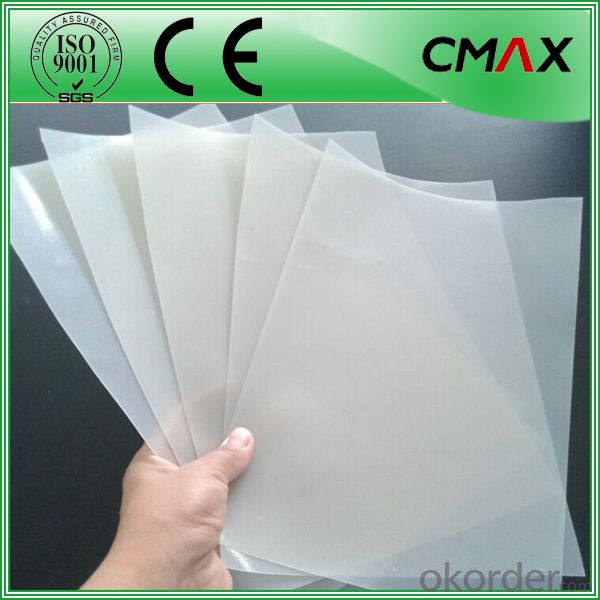
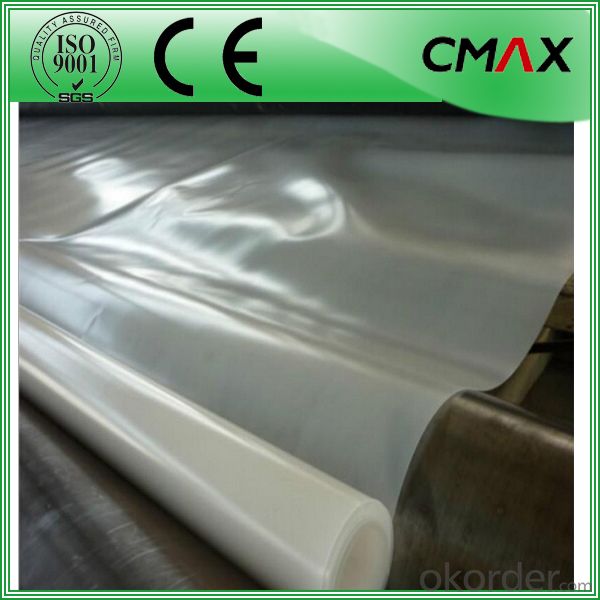

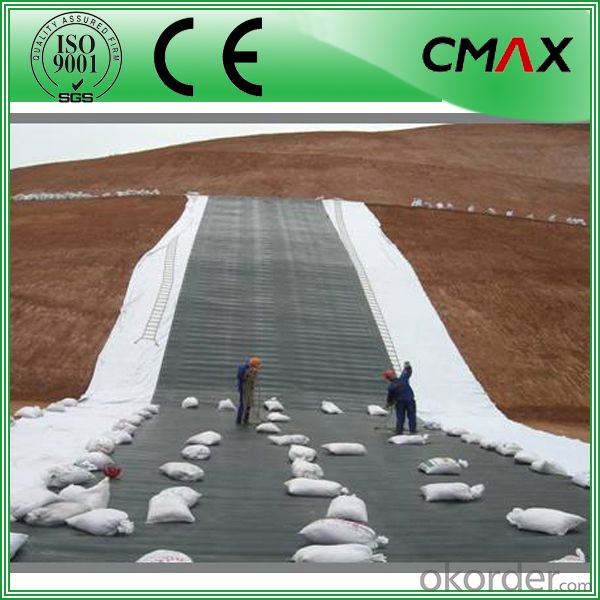
Applications:
1) Environmental protection, sanitation (such as solid waste landfills, sewage treatment plants, power plants Chi-conditioning, industrial, hospital solid waste, etc.) .
2) Water (such as rivers, lakes and reservoirs of the anti-dam, plugging, reinforcement of the canal seepage, the vertical wall of the heart, slope protection, etc.).
3) Municipal Engineering (subway, on the ground floor of the building, planted roof, the roof garden of anti-seepage, sewage pipes lining, etc.).
4) Landscape (man-made lake, river, reservoir, golf courses reservoirs of the substrate, slope protection, green lawn of the waterproof moisture, etc.).
5) Petrochemical (chemical plants, oil refineries, gas storage tanks of the anti-chemical reaction tanks, sedimentation tanks of the lining, etc.).
6) Mining (washing and pool heap leaching, the ash-field, dissolved, precipitation, the yard, the tailings seepage substrates, etc.) .
Packing and shipping:
1. The outer package: black or white woven geotextile.or we can make the package as your requst.
2. Different tgram/ roll size for different qty in the same containers.
3. Roll size: 3.95m*200 for container
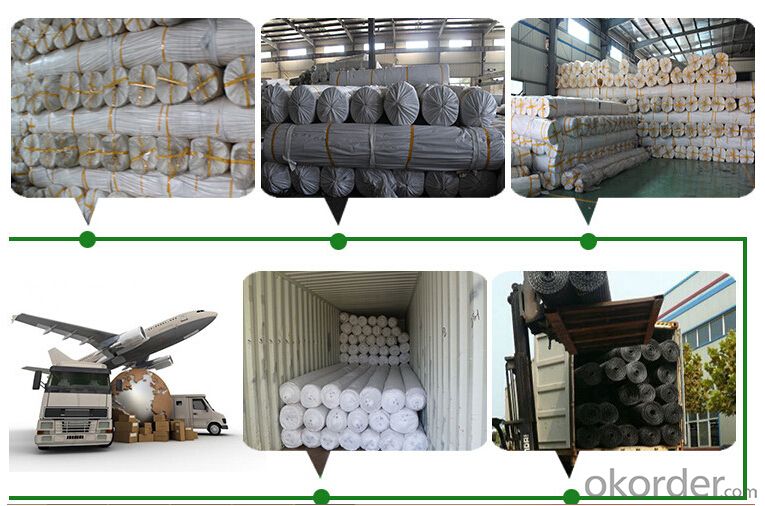
FAQ:
Q1: What is your minimum order quantity?
A:The minimum order quantity is 5000 ,but it is negotiable.
Q2:What is your payment terms?
A: T/T,Western Union,Paypal,L/C...
HDPE Geomembrane Price
Q3:What is your delivery time?
A:Production time usually costs 2-20 days.
Waiting to cooperate with you!
- Q: Are geotextiles suitable for use in underground drainage systems?
- Yes, geotextiles are suitable for use in underground drainage systems. They are commonly used to separate soil layers, filter out fine particles, and provide reinforcement to the drainage system. Geotextiles can enhance the performance and longevity of underground drainage systems by preventing clogging, promoting water flow, and reducing soil erosion.
- Q: How do geotextiles help with vegetation establishment in landscaping projects?
- Geotextiles help with vegetation establishment in landscaping projects by providing a stable and favorable environment for plants to thrive. They prevent soil erosion, retain moisture, and control weed growth, which ultimately promotes healthy root development and successful establishment of vegetation.
- Q: What are the installation guidelines for geotextiles used in erosion control blankets?
- The installation guidelines for geotextiles used in erosion control blankets typically involve several steps. Firstly, the area where the blanket will be installed should be properly prepared by removing any vegetation or debris. The soil surface should be smooth and compacted. Next, the geotextile should be rolled out over the prepared area, ensuring it is properly aligned and overlaps any adjacent sections. It is important to secure the geotextile with stakes or pins to prevent it from shifting during installation. Once the geotextile is in place, it should be covered with an appropriate layer of soil or mulch to provide additional stability and protection. This layer should be evenly distributed and compacted to prevent erosion. Regular maintenance and inspection of the erosion control blanket and geotextile is also necessary to ensure their effectiveness. This may involve checking for any signs of damage, such as tears or rips, and repairing or replacing them as needed. Overall, following the manufacturer's guidelines and best practices for installation will help ensure the geotextiles used in erosion control blankets perform optimally and provide effective erosion control.
- Q: How do geotextiles help with reinforcement of geotextile tubes?
- Geotextiles help with the reinforcement of geotextile tubes by providing additional strength and stability. They act as a barrier between the soil and the tube, preventing soil erosion and maintaining the integrity of the structure. The geotextiles distribute the load evenly and reduce the risk of punctures or tears in the tube, thereby enhancing its overall performance and longevity.
- Q: Can geotextiles be used in geocomposite applications?
- Yes, geotextiles can be used in geocomposite applications. Geocomposites are materials made by combining different geosynthetic components, including geotextiles, to achieve specific engineering functions. Geotextiles, due to their high tensile strength, filtration capabilities, and drainage properties, are commonly used in geocomposites to enhance the overall performance and functionality of the composite material.
- Q: What are the design considerations for geotextile-reinforced soil walls?
- Some design considerations for geotextile-reinforced soil walls include selecting the appropriate geotextile material, determining the optimal spacing and orientation of the reinforcement, ensuring proper compaction of the soil, considering the impact of water on the wall's stability, and accounting for any potential settlement or creep in the soil over time. Additionally, factors such as the height of the wall, the slope angle, and the overall stability and strength requirements must also be taken into account during the design process.
- Q: How are geotextiles used in landfills?
- Geotextiles are used in landfills to help enhance the stability, drainage, and filtration of the waste disposal site. They are typically placed between the layers of soil and the landfill liner system to prevent soil erosion, control gas and liquid migration, and provide reinforcement for the overall structure.
- Q: How do geotextiles help with erosion control in riverbanks?
- Geotextiles help with erosion control in riverbanks by providing a protective barrier that prevents soil erosion, while allowing water to flow through. They stabilize the soil, preventing it from being washed away by the force of the water, and also promote the growth of vegetation, which further helps to anchor the soil and protect against erosion.
- Q: What are the limitations of using geotextiles?
- There are several limitations associated with using geotextiles. Firstly, geotextiles may not be as effective in controlling erosion on steep slopes or in areas with heavy rainfall. Additionally, they may not provide adequate support for heavy loads or traffic, making them unsuitable for certain construction projects. Geotextiles also have limited durability and may degrade over time, requiring frequent replacement. Finally, the cost of geotextiles can be relatively high, making them less affordable for some applications.
Send your message to us
Geomembrane HDPE Pond Lining 0.2,0.3,0.5,0.6mm for Water,Pond,Landfill Construction
- Loading Port:
- Tianjin
- Payment Terms:
- TT OR LC
- Min Order Qty:
- 100 roll
- Supply Capability:
- 20000 roll/month
OKorder Service Pledge
OKorder Financial Service
Similar products
Hot products
Hot Searches
Related keywords
